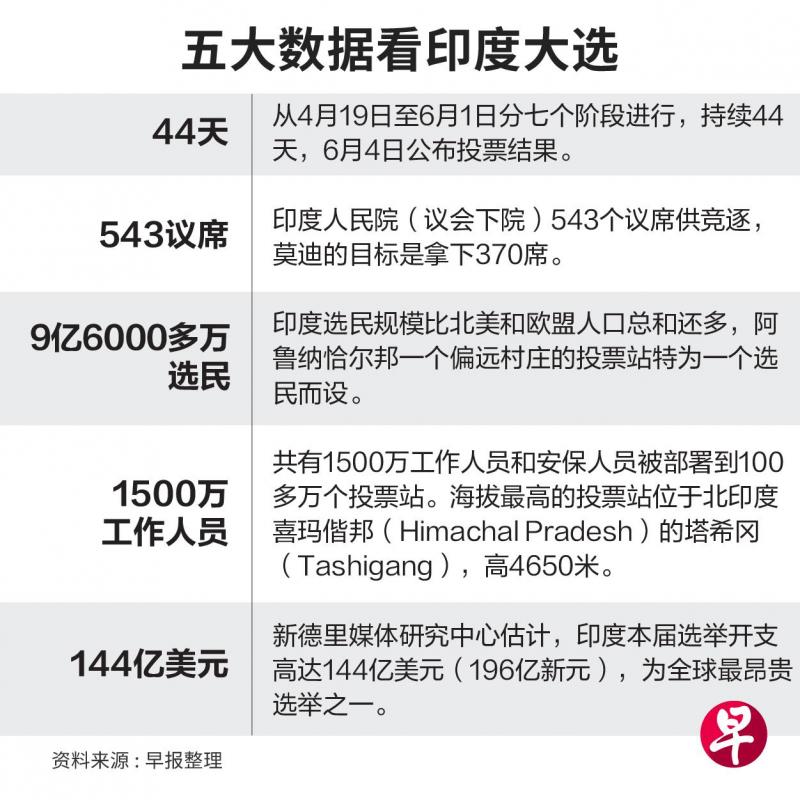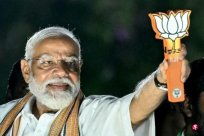
India's People's Court (lower council) election kicked off on April 19th. India Prime Minister Modi, who is known as one of the world's most popular leaders, won the third term without suspense.In the 10 years in Modi, India has jumped into the fifth largest economy in the world, and the internationally emerged optimistic predictions of "inevitable rise of India".Modi set the goal for India to rank among developed countries in 2047, but on the way to lead India to become developed countries, he faced a lot of challenges.
"Good days are coming."
Modi, who was elected Prime Minister of India in 2014, made such a commitment to the people during the campaign.
Today, 10 years later, the construction of infrastructure such as the Indian railway, highway, and airports has improved significantly; most of the remote villages have been powered on, and they have more drinking water and toilets. These are all seen by the Indian people.
India's global economic status has also jumped in four levels in Modi's 10 years, surpassing Britain, France, Italy, and Brazil.Its GDP (GDP) reached US $ 3.7 trillion (about S $ 500 million) last year and is the fifth largest economy in the world.
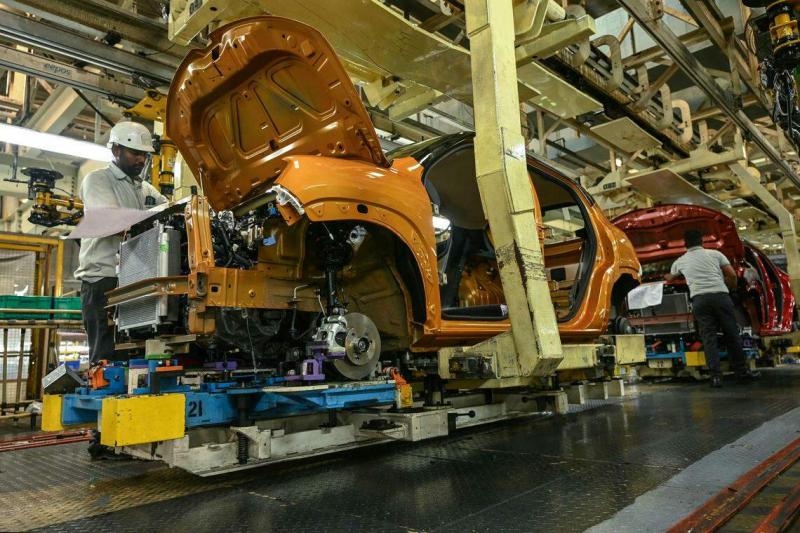
The latest forecast of the International Monetary Fund (IMF) shows that India's nominal GDP may reach US $ 4.3398 trillion in 2025, surpassing Japan's US $ 4.313 trillion, thus becoming the fourth largest economy in the world, comparedThe prediction has been advanced for a year.
Many analysts predict that by 2027, India will become the third largest economy in the world after the United States and China.
The youth unemployment rate of more than 80 % has employment capabilities
However, interviewees pointed out that India actually faces many challenges at home and abroad, and to be promoted to developed countries, they must first solve these problems.
Ian Hall, a professor of international relations at Griffith University, Australia, told United Morning Post: "The biggest challenge facing India is to create appropriate conditions to use the so -called population bonus, especially to improve the education system.And create employment opportunities for young people."
India's domestic unemployment rate is high, and the international labor organization's report this year shows that India's youth unemployment rate is as high as 83%.In 2023, the Indian Skills Report found that only half of India has employment capabilities.

Associate Professor IQball Singh Sevea, director of the South Asia Research Institute of Singapore, pointed out in a Lianhe Zaobao interview that to ensure that young people become dividends, not challenges, India needs to create employment opportunities, and it cannot just create low skills to create low skills.Working with Labor, because a world that uses digital technology, robots and artificial intelligence needs to have new skills.
He said: "It is expected that by 2030, India will need to create 140 million new jobs. To achieve this goal, India must invest extensively in infrastructure, education and skills training.Expand Manufacturing "
The richest 10%population control 77%national wealth
At present, 77%of the national wealth in India is controlled in the hands of the richest 10%of the population.Studies released by the world unequal database in Paris showed that although the number of billionaires in India has doubled in the past 10 years, most Indians have stagnated income.Their annual income is only US $ 1,265, and 90%of the country's people earn less than $ 3,900.This means that the domestic consumption of the huge population of India will be difficult to stimulate the economy faster.
The Indian People's Party led by Modi set goals, which will make India a developed country in 2047, the 100th anniversary of the national independence.According to the World Bank standards, the per capita GDP reaches 20,000 US dollars is low -developed countries, while India's per capita GDP announced in 2023 only exceeded $ 2,500.Wu Lin, an associate researcher at the Asia Institute of China Institute of Foreign Affairs, said in an interview with Lianhe Morning Post: "India's per capita GDP is eight times in 23 years, which is not easy."
In the 23 years from 2000 to 2023, India's per capita GDP was only five times.
Wu Lin said: "The current problem that India needs to solve is not only to expand foreign investment and earn the dividend of global supply chain reorganization. It is more important to solve the low domestic governance capacity, weak manufacturing foundation, business environment, labor employment, Women's empowerment and other structural issues. If these key issues are dealt with by the Indian People's Party in a politicized manner, it is likely that it will not be fundamentally improved for a long time, which will restrict India's sustainable development. "
Analysis: The key to the manufacturing industry is more important than the infrastructure
India's economy is still a distance compared with the economic scale of US $ 17.8 trillion in China.Economists believe that to catch up or even surpass China, India has to improve in many ways.
The Wall Street Journal's analysis reported in December last year pointed out that whether India can become a manufacturing center that can be comparable to China is that India can build the infrastructure required for more quickly.
The Modi government obviously realized this.Since Modi came to power, the Indian National Expressway Network has increased by nearly 55,000 kilometers, with a total length of 60%.
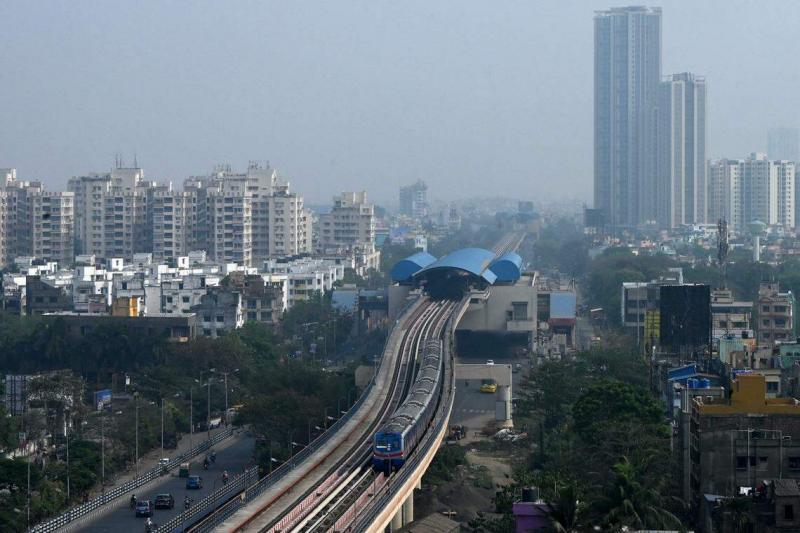
The Modi government's appropriation of infrastructure in the 2025 fiscal year has increased more than twice as much as five years ago, more than 11 trillion rupees (S $ 180 billion).If it has won the next five -year term, Modi is expected to invest 143 trillion rupees in the six years as of the six years as of 2030 to improve railway, highways, ports, waterways, and other important infrastructure.
In terms of digital infrastructure, India is also catching up.India has 8.8125 million Internet users, ranking second in the world, second only to China of 150 million, and general civilians can also useSmart mobile phones to pay daily shopping transactions.
In addition to the development of infrastructure to improve business convenience, Modi's implementation of tax rebates and capital support also attracted foreign companies including Apple and Samsung Electronics to set up factories in India.However, India's foreign direct investment last year was US $ 28 billion, a 27%reduction compared to the previous year.
Ritesh Kumar Singh, CEO and Chief Economist of India Macroeconomic Consulting Co., Ltd. told the United States: "Indian officials have continued to increase in market supervision, coupled with the relatively relatively domestic market size comparedSmall, these all make foreign investors unable to wrap India.

In fact, India faces not only China's competition, but also the competition in emerging markets that may have closer relations with the United States.Sanjev Prasad, managing director and co -director of Kotak SecuritiesWhat else is the big company come to India?
Modi promotes Hindu nationalist unity people to laid hidden safety hazards
Moder, who is born in grassroots, has vigorously promoted the Index nationalist policy in the past 10 years, which is a double -edged sword for India's next domestic political and social development.The survey results of the Pew Research Center in early 2020 showed that 64%of Hindus believed that his religious identity was very important for becoming a "real Indian".
Ravi Agrawal, editor -in -chief of Foreign Policy Magazine, published an article in early April that the Modi government defines nationality through Hindu, which has enhanced the pride and national identity of the majority of Hindus, catering to many India many IndiaThe expectations of young people.
Professor Hall of Griffis University in an interview: "Since the re -election in 2019, the Modi government has more actively promoting the Hindu nationalist agenda, such as termination of Kashmir's special autonomy and in AjeitiaThe original return to the church dispute to build the Hindu Temple.
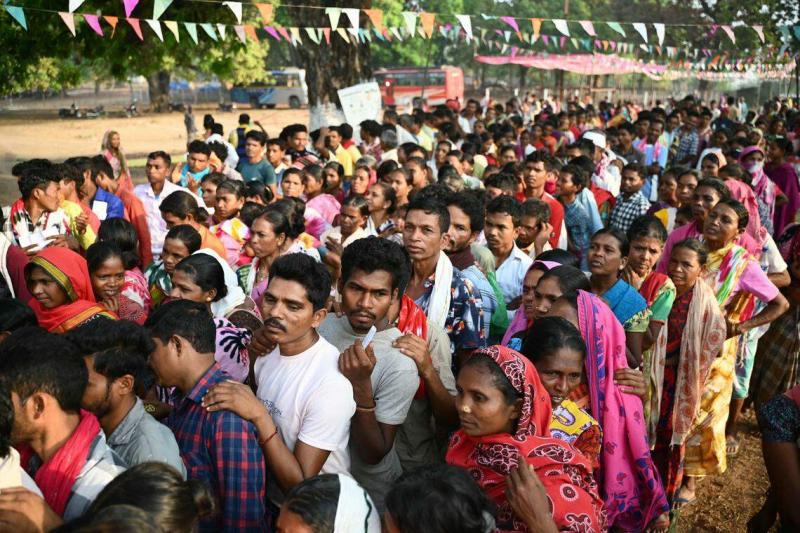
Hall believes that if Modi's Indian People's Party has achieved an overwhelming victory in this election, he may work harder to promote the core demands of Hindu nationalism."But if it is not a significant victory, they may hesitate and change to support a more mild age agenda."
However, Wu Lin judged that "Modi 3.0" will continue and even strengthen Hindu nationalism, so as to unite domestic people and show international identities.
She pointed out: "In the context of the return of mostist ideological trends and geopolitical competition, this policy has the conditions and foundations of the existence. India under the leadership of strong people may create more achievements for national pride, but they will also beBecause of the complex relationship between religion and politics, it brings hidden safety hazards to India's surrounding India. How India will shape its regional leadership and legitimacy basis will face many challenges.
Ps Suryanarayana, a senior researcher at Nanyang University of Technology RSIS (RSIS), said in an interview with Lianhe Morning Post: "Indian Hindu nationalism has been widely regarded in China and is widely regarded in China.The national rejuvenation of the country, not religious extremism. "
Foreign Policy Ethnic Scholars: Or Coincocence
This nationalism has penetrated into many fields of decision -making, including diplomacy.Surianaraiana believes that India is similar to China, which expects the great rejuvenation of the Chinese nation: "Just like China, India has also adopted a self -confident foreign policy to gain due position on the world stage."
But Rohan Mukherjee, an assistant professor at the International Relations of the School of Political Economics, London, wrote in foreign affairs in April that India may be clumsy if the foreign policy was affected by nationalism.
He said, last year's Canada Canada Canada The incident caused a diplomatic storm between Canada and India, which is one of the signs of "turning" in Indian nationalist diplomacy."National pride may have no boundaries, but foreign policies must operate in a highly limited environment. Indian political leadership must do with caution to ensure that nationalist diplomacy will not damage national goals."
India wants to be a leader in the multi -pole world
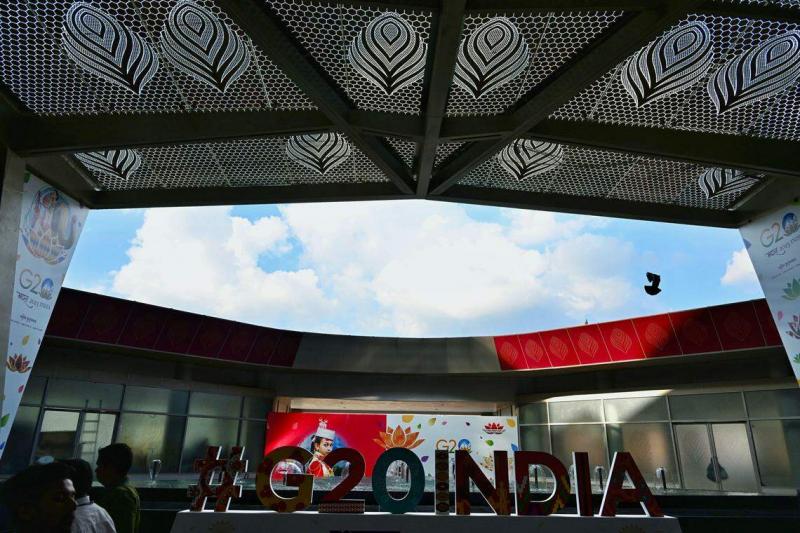 Scholars of
Scholars of India led by Modi is increasingly active on the international stage. It not only deepen strategic cooperation with Western countries such as the United States, but also frequently interacts with the global southern south.India strives to position themselves in the world structure, with a view to occupying a place in the multi -pole world.However, as the global situation worsen, whether Modi's strategy can help India to be observed.
India has so far been using existing international platforms, such as the G20 (G20) and non -alliance movement to promote their own strength.Some analysis believes that this shows that India does not seek to overthrow the world order currently dominated by the West.
But this does not mean that Modian is only a bridge between the southern and developed countries around the world."India hopes to conform to the trend of the times as part of any new world order, and has an important speech in accordance with the trend of the times, and has an important speech ... India is committed to becoming southern and Western countries in the world.The bridge between India is the leading force of becoming a new order in the world.
Wu Lin also believes that what India wants to do is a leading power, not just a balanced country.This can be reflected in India's hope to become a permanent member of the United Nations Security Council, a well -deserved member of the big country club; the global leader of the world, and the "world instructor" to become global education through soft power.
India does have the conditions to exert its influence in some areas."India is obviously unable to be in the world with ChinaThe loan provided by the loan compete, but India is fully capable of providing assistance in specific fields such as digital connection and pharmaceuticals (for other countries). These are areas of India that are relatively advantageous."
Modi has always pursued strategic independent policies, and no one has biased it. It has promoted diplomatic work based on the interests of India. While deepening the relationship with the United States, he also carefully maintains friendship with Russia.However, the current geopolitical situation in the world is unstable, and the cracks between hostile countries have deepened, and the challenges of this strategy are getting greater.
Hall said that India lacks economic and military strength to defend all interests."India will continue to adopt a tough attitude in some areas and compromise in other areas, hoping to maintain a balance between the two ... It also regards re -connecting the global south as a kind of polarization and balanced international order.Method, but it may not be able to obtain everything it wants. "
To maintain friendly diplomatic posture with all countries, in some scholars, it can only be an appropriate measure.If you cannot establish a deeper relationship with other countries, India's current sought after by all parties may be fleeting.
Sumit Ganguly, a special professor at the Political Department of the Political Department of the University of Indiana, told the Nikkei Asia: "If it is not based on the basis of values, principles, and common beliefs, it has established a long -lasting connection with other countries.Will not be your ""
